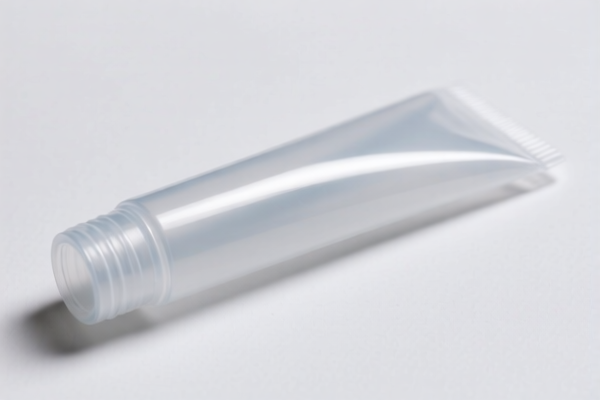| HS Code | Official Doc | Tariff Rate | Origin | Destination | Effective Date |
|---|---|---|---|---|---|
| 9506400000 | Doc | 35.1% | CN | US | 2025-05-12 |
| 9506990530 | Doc | 37.5% | CN | US | 2025-05-12 |
| 9505906000 | Doc | 30.0% | CN | US | 2025-05-12 |
| 9505902000 | Doc | 30.0% | CN | US | 2025-05-12 |
| 7020006000 | Doc | 60.0% | CN | US | 2025-05-12 |
| 7020003000 | Doc | 55.0% | CN | US | 2025-05-12 |
| 3917310000 | Doc | 58.1% | CN | US | 2025-05-12 |
| 3917320050 | Doc | 58.1% | CN | US | 2025-05-12 |
| 3926902100 | Doc | 41.7% | CN | US | 2025-05-12 |
| 3926909989 | Doc | 42.8% | CN | US | 2025-05-12 |
| 6114909070 | Doc | 35.6% | CN | US | 2025-05-12 |




Breathing Tube
A breathing tube, also known by various specific names depending on its application and design, is a device used to maintain or facilitate an open airway for respiration. These tubes are employed in a range of medical and non-medical scenarios, differing significantly in complexity and purpose.
Materials
Breathing tubes are constructed from a variety of materials, selected based on intended use duration, patient sensitivity, and required flexibility. Common materials include:
- Polyvinyl Chloride (PVC): Rigid and cost-effective, often used for shorter-term applications.
- Silicone: Biocompatible, flexible, and resistant to kinking, suitable for long-term use and sensitive airways.
- Latex: Historically common, but increasingly less used due to allergy concerns.
- Reinforced Plastic: Combinations of materials to provide both strength and flexibility.
- Metal (Stainless Steel): Used in rigid bronchoscopes and some specialized airway devices.
Purpose & Function
The primary function of a breathing tube is to ensure a clear passage for air to reach the lungs. This is achieved through:
- Airway Patency: Maintaining an open airway, bypassing obstructions like the tongue, swollen tissues, or foreign objects.
- Mechanical Ventilation: Allowing connection to a ventilator for assisted or controlled breathing.
- Oxygen Delivery: Providing a direct route for oxygen administration.
- Protection of the Airway: Preventing aspiration of fluids (e.g., saliva, vomit, blood) into the lungs.
- Suctioning: Enabling removal of secretions from the airway.
Usage Scenarios
Breathing tubes are utilized in diverse situations:
- Anesthesia: During surgical procedures requiring general anesthesia to control breathing and protect the airway.
- Critical Care: In intensive care units for patients with respiratory failure, trauma, or neurological conditions.
- Emergency Medicine: During resuscitation, intubation for airway obstruction, or management of severe respiratory distress.
- Scuba Diving/Snorkeling: As part of a regulator system to deliver breathable air underwater. (Often referred to as a 'mouthpiece' in this context).
- Resuscitation: Used in bag-valve-mask ventilation and endotracheal intubation.
- Tracheostomy/Bronchostomy: Long-term airway support via a surgically created opening in the trachea.
Common Types
Breathing tubes are categorized based on their design and intended use:
- Endotracheal Tube (ETT): Inserted through the mouth or nose into the trachea. These are cuffed (with an inflatable balloon to seal the airway) or uncuffed.
- Tracheostomy Tube: Inserted through a surgical incision in the trachea. Available in various sizes and designs (e.g., cuffed, fenestrated - with openings for speech).
- Laryngeal Mask Airway (LMA): A supraglottic airway device placed in the pharynx, above the larynx. Used for ventilation and airway management, often as an alternative to intubation.
- Bag-Valve-Mask (BVM): A handheld device used to deliver positive pressure ventilation. Requires a mask to seal over the patient's mouth and nose. Often used with an ETT.
- Snorkel: A simple breathing tube used for surface swimming, allowing underwater breathing with a face mask.
- Regulator (Scuba): A complex device that delivers breathable air from a scuba tank, including a mouthpiece connected to a breathing tube.
- Esophageal Airway: A device inserted into the esophagus to provide an alternative airway, primarily used in emergencies.
Based on the provided information, the following HS codes may be relevant to “breathing tube”:
- 3917310000: Tubes, pipes and hoses and fittings therefor (for example, joints, elbows, flanges), of plastics: Other tubes, pipes and hoses: Flexible tubes, pipes and hoses, having a minimum burst pressure of 27.6 MPa. This code covers flexible plastic tubes with a specific burst pressure requirement. Breathing tubes often fall into this category if made of plastic and meet the pressure specification.
- 3917320050: Tubes, pipes and hoses and fittings therefor (for example, joints, elbows, flanges): Other tubes, pipes and hoses: Other, not reinforced or otherwise combined with other materials, without fittings Other. This code applies to plastic tubes that are not reinforced and do not have fittings. If the breathing tube is a simple plastic tube without reinforcement or fittings, this code may be applicable.
- 6114909070: Other garments, knitted or crocheted: Of other textile materials: Other Other: Other (859). While primarily for garments, this code includes items of "other textile materials." If the breathing tube is constructed from knitted or crocheted textile materials, this HS code could be considered.
Regarding HS code 3917310000 and 3917320050, it is important to verify the material composition (plastics) and confirm whether the tube meets the minimum burst pressure of 27.6 MPa (for 3917310000) or is not reinforced/combined with other materials and lacks fittings (for 3917320050).
Customer Reviews
No reviews yet.